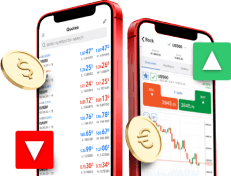As a rule, volatility in the currency market is followed by periods of smaller fluctuations after periods of higher fluctuations in exchange rates. The year 2019, which is coming to an end, is just such a year where volatility does not seem to pamper investors, after reaching multiyear lows.
No major discrepancies in the policies of major central banks, keeping interest rates at very low levels, no big surprises, all this seems to cause low volatility in the currency market, which translates into both low realized volatility and low expected volatility. From the point of view of enterprises, this is the most positive phenomenon, because it means less fluctuations in revenues for exporters and, if a company hedged the exchange rate, lower costs of doing so. However, for traders and investors, this is a kind of problem because with low volatility it is difficult to find good investment opportunities.
Implied volatility for the currency market is at multi-year lows. For the AUD/USD pair, the monthly expected volatility falls near the lowest level since 1996. For the USD/JPY pair, the expected monthly volatility has fallen to the lowest level since 2014. The implied monthly volatility may indicate that in December exchange rates move in narrow ranges. Thus, investors do not currently expect that the last Fed meeting or trade war this year will lead to a significant increase in exchange rate fluctuations.
Euro volatility index. Source: Cboe
Also, volatility for the main currency pair set new lows. According to Cboe data, the expected 30-day volatility for the euro has fallen below 2014 low and is thus the lowest for at least a decade.
Who can be supported by low volatility in addition to entrepreneurs? It may encourage investors to use carry trade, i.e. buy a currency with higher interest for a currency with a lower interest rate. However, current differences in interest rates are so small that retail investors find it more difficult to take advantage of carry trade. Institutional investors, while maintaining such low volatility, may, however, create not so volatile but more systematic trends on this type of currency pairs.
Daniel Kostecki, Chief Analyst Conotoxia Ltd.
Materials, analysis and opinions contained, referenced or provided herein are intended solely for informational and educational purposes. Personal Opinion of the author does not represent and should not be constructed as a statement or an investment advice made by Conotoxia Ltd. All indiscriminate reliance on illustrative or informational materials may lead to losses. Past performance is not a reliable indicator of future results.
65% of retail investor accounts lose money when trading CFDs with this provider. You should consider whether you understand how CFDs work and whether you can afford to take the high risk of losing your money.


